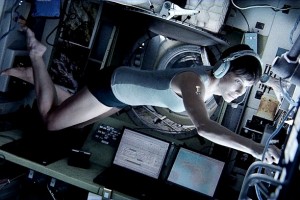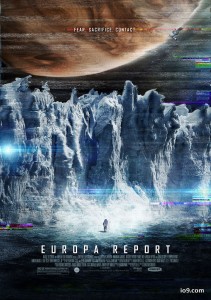As the title informs you I will only be speaking about the Klingons as they appeared in the original Star Trek series, not he later retconed aliens that were introduced in the Motion Picture and later elements of the franchise.
Star Trek arrived during an interesting period in entertainment history, by being produced in the later 60’s the series was influenced by and could be seen as a metaphor for both World War II and The Cold War. The writers, directors and producers of the series 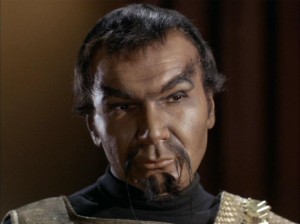 counted among their number several World War II veterans while the Cold War, now well under way, underpinned everyday life and provided an atmosphere of dread under the treat of global nuclear war. It is natural for people to look on the Klingons of the original series as a metaphor for either the NAZIs or the Communists, but which is a better fit?
counted among their number several World War II veterans while the Cold War, now well under way, underpinned everyday life and provided an atmosphere of dread under the treat of global nuclear war. It is natural for people to look on the Klingons of the original series as a metaphor for either the NAZIs or the Communists, but which is a better fit?
Now first I am not putting forth a proposition as to what was in the creators heads when they crafted Star Trek’s original bad guys, but rather just an exercise about which brutal ideology best matches what we know of the Klingons.
There are of course a number of areas of overlap between the deadly forces of Communism and National Socialism. Both were brutal dictatorships, both murdered on a 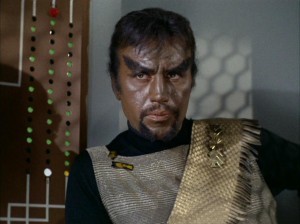 vast scale, both were ruthlessly expansionistic, both were extremely militaristic, both engaged in suppression of dissidents, both crushed the individual under the power of the state.
vast scale, both were ruthlessly expansionistic, both were extremely militaristic, both engaged in suppression of dissidents, both crushed the individual under the power of the state.
All of these elements would seem to apply to the Klingon Empire, both this complicates the issues. However it is important to recognize that National Socialism and Communism however similar in many area are not the same thing, so perhaps by finding key differences between the two and apply them to what we know or can extrapolate from the Klingons we can determine the best match.
Communism did not recognize the right to own property. All property belonged to the state, while Nazism recognized private property in a fairly recognizable state, corporations, 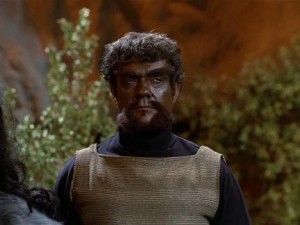 and the like. From the original series we have no data about the Klingon economic models and systems, so we can’t use this as a point of differentiation.
and the like. From the original series we have no data about the Klingon economic models and systems, so we can’t use this as a point of differentiation.
Communism believed in an inevitable march of history; that peoples and cultures inexorably moved through certain developmental stages, in the same sequence, and that the end results would be the stateless commune. Nazism believed in the survival of the fittest on both a racial and a cultural, which were really one and the same for them, stage. They thought that it was the natural order for the strongest culture to dominate and subjugate the ‘weaker.’
Ah here we have a bit of a match with the original series Klingons. They clearly believed that if they were stronger is was natural and right for they to rule. They did not argue their dominance from destiny, but from ability.
Communism was a very delusion and distorted view of mass teamwork. That everyone person, if given an equal share would pull equally hard for the greater good and that want and greed would die away. It was group oriented, but in a fanciful belief that people would become happy and prosperous in a share and share-alike fantasy. Nazism saw the individual as only a cog in a machine to support the state, and the race which defined the state. Every man and woman had a duty to the state and that duty overrode all individual consideration. There was no utopian fantasy of universal brotherhood, only the importance of the state over the individual. This matches up quite nicely with Commander Kor’s speech to Kirk in ‘Mission of Mercy’ just before his men burst in to, once again, arrest the Captain.
The final point of divergence is the spread of ideology.
The communists could be though of a evangelicals. It was not enough to conquer territory, to claim resources, to amass power, they also had a burning need to convert. They desires that not only did subjugate peoples bend knees to their power, but adopted their view and 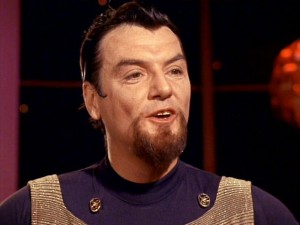 vision of the future. Like the Inquisition before them the Communists could brook no heretics. The Nazis weren’t interested in that at all. Because of the racial components of their belief system, they saw the world as a conflict between themselves and everyone else. They never expressed an argument that their system was better for everyone, they never tried to convince Kirk or the Organians that they should convert, but rather brute force to take was enough and all they required was subservience.
vision of the future. Like the Inquisition before them the Communists could brook no heretics. The Nazis weren’t interested in that at all. Because of the racial components of their belief system, they saw the world as a conflict between themselves and everyone else. They never expressed an argument that their system was better for everyone, they never tried to convince Kirk or the Organians that they should convert, but rather brute force to take was enough and all they required was subservience.
To me this makes it clear, for the Original Series Star Trek, the Klingons were much more like Nazis than communists.
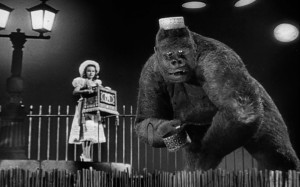 My selection is 1949’s Might Joe Young. It has been called, and rightly so in my opinion, a King Kong knock-off. It is the story of a young woman and her pet 12 foot tall gorilla. They are brought out of the wilds of Africa to the wilds of Hollywood as entertainment for a nightclub. The ape goes mad, there is destruction and terror in the streets of Los Angeles. All in all not a terribly original story line, it features one of the stars of the original King Kong, a truly influential film, and the special effects were headed up by Willis O’Brien, the technical wizard who did the effects for Kong.
My selection is 1949’s Might Joe Young. It has been called, and rightly so in my opinion, a King Kong knock-off. It is the story of a young woman and her pet 12 foot tall gorilla. They are brought out of the wilds of Africa to the wilds of Hollywood as entertainment for a nightclub. The ape goes mad, there is destruction and terror in the streets of Los Angeles. All in all not a terribly original story line, it features one of the stars of the original King Kong, a truly influential film, and the special effects were headed up by Willis O’Brien, the technical wizard who did the effects for Kong.

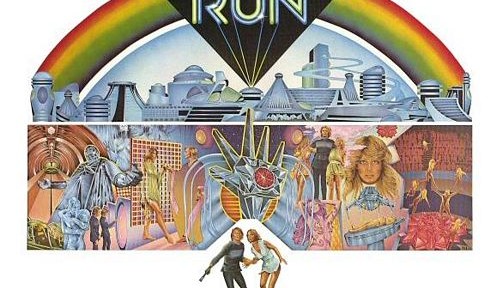
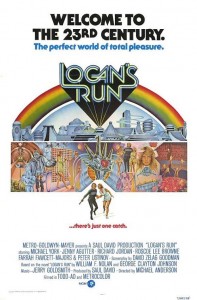 Logan’s Run is a 1976 Science-Fiction film made before that great behemoth Star Wars derailed Science-Fiction films for a generation. The film, based on a novel of the same name written by William F. Nolan and George Clayton Johnson, is set in a utopian 23rd century. Crime, disease, hunger, war, and pollution, are all problems of a literally forgotten past. The story is set in an unnamed city, protected from the war-torn hell that scars the Earth by massive domes, where the citizens lead lives dedicated to frivolity and hedonistic pleasures. Families no longer exist, and people are raised in crèches without ever knowing their parents. All their needs are met, the city is government by a benevolent computer system called the Network, and it all works seamlessly.
Logan’s Run is a 1976 Science-Fiction film made before that great behemoth Star Wars derailed Science-Fiction films for a generation. The film, based on a novel of the same name written by William F. Nolan and George Clayton Johnson, is set in a utopian 23rd century. Crime, disease, hunger, war, and pollution, are all problems of a literally forgotten past. The story is set in an unnamed city, protected from the war-torn hell that scars the Earth by massive domes, where the citizens lead lives dedicated to frivolity and hedonistic pleasures. Families no longer exist, and people are raised in crèches without ever knowing their parents. All their needs are met, the city is government by a benevolent computer system called the Network, and it all works seamlessly.
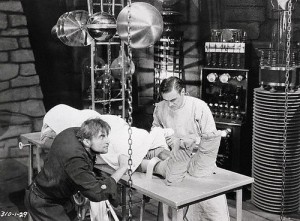 Frankenstein – 1931 – James Whale
Frankenstein – 1931 – James Whale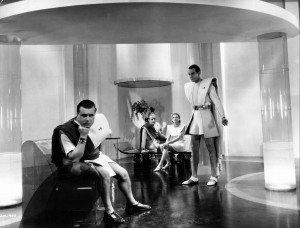
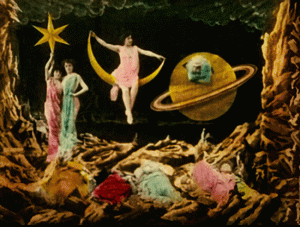 A trip to the Moon (Le voyage dans la lune) – 1902 – George Melies
A trip to the Moon (Le voyage dans la lune) – 1902 – George Melies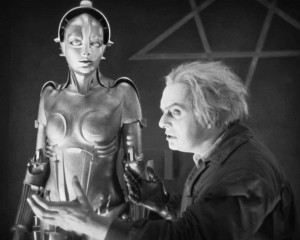 Metropolis – 1927 – Fritz Lang
Metropolis – 1927 – Fritz Lang counted among their number several World War II veterans while the Cold War, now well under way, underpinned everyday life and provided an atmosphere of dread under the treat of global nuclear war. It is natural for people to look on the Klingons of the original series as a metaphor for either the NAZIs or the Communists, but which is a better fit?
counted among their number several World War II veterans while the Cold War, now well under way, underpinned everyday life and provided an atmosphere of dread under the treat of global nuclear war. It is natural for people to look on the Klingons of the original series as a metaphor for either the NAZIs or the Communists, but which is a better fit? vast scale, both were ruthlessly expansionistic, both were extremely militaristic, both engaged in suppression of dissidents, both crushed the individual under the power of the state.
vast scale, both were ruthlessly expansionistic, both were extremely militaristic, both engaged in suppression of dissidents, both crushed the individual under the power of the state. and the like. From the original series we have no data about the Klingon economic models and systems, so we can’t use this as a point of differentiation.
and the like. From the original series we have no data about the Klingon economic models and systems, so we can’t use this as a point of differentiation. vision of the future. Like the Inquisition before them the Communists could brook no heretics. The Nazis weren’t interested in that at all. Because of the racial components of their belief system, they saw the world as a conflict between themselves and everyone else. They never expressed an argument that their system was better for everyone, they never tried to convince Kirk or the Organians that they should convert, but rather brute force to take was enough and all they required was subservience.
vision of the future. Like the Inquisition before them the Communists could brook no heretics. The Nazis weren’t interested in that at all. Because of the racial components of their belief system, they saw the world as a conflict between themselves and everyone else. They never expressed an argument that their system was better for everyone, they never tried to convince Kirk or the Organians that they should convert, but rather brute force to take was enough and all they required was subservience.